Ancient Egyptian Amulets
Scarabs
By Kierra Foley
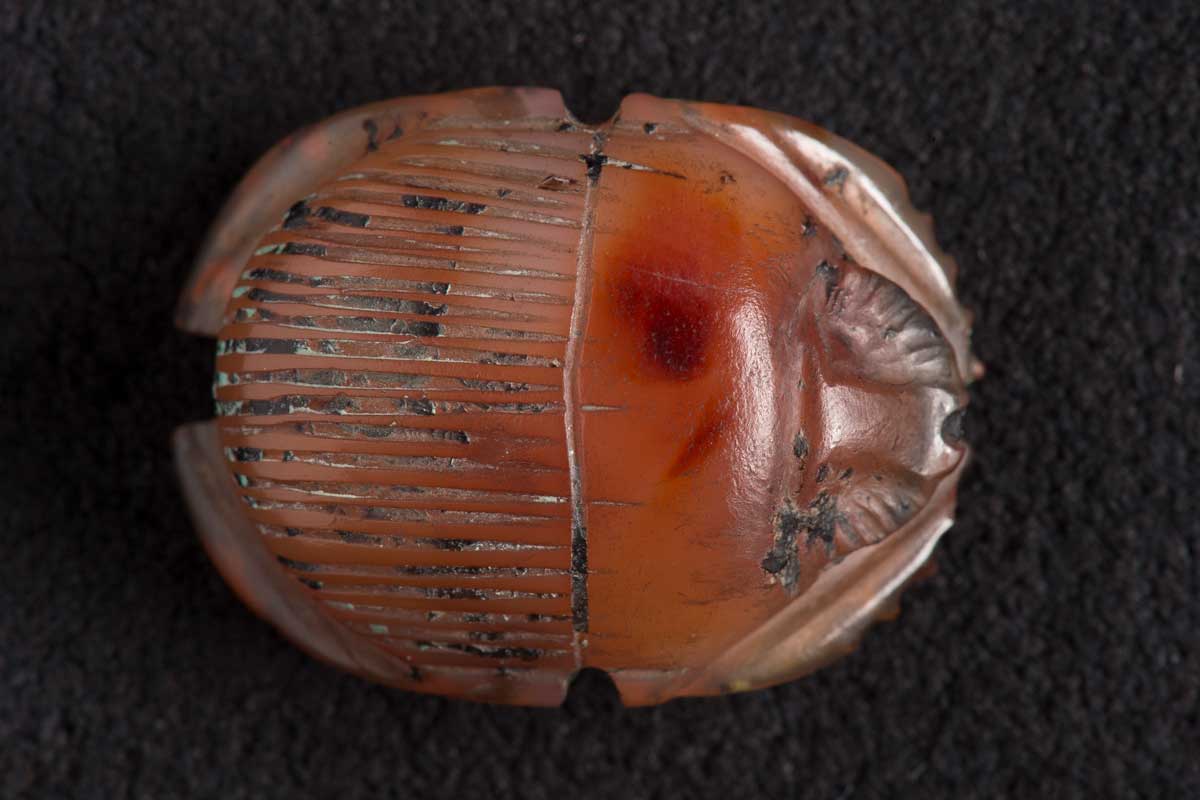

Measurements: Width: 1.84 cm; Length: 2.22 cm; Thickness: 0.72 cm
Material: Stone, carnelian
Date: Late Period, ca. 664-332 BCE
Provenance: Unknown; Henry Salt Estate
Collection: Cohen Collection of Egyptian Antiquities, number 249
Description (3791)
This carnelian scarab is an amber/orange color. It is rendered in a highly naturalistic style and both its back and bottom are carved with fine detail. Traces of black paint remain in its incised lines.
Discussion
Through modern cinema and film, Western society has come to perceive the Egyptian scarab as a destructive and evil entity, but the ancient Egyptian understanding of the beetle was very different. The Egyptians saw the Egyptian scarab (Scarabaeus sacer) as a symbol of renewal and rebirth. The beetle was associated closely with the sun god because scarabs roll large balls of dung in which to lay their eggs, a behavior that the Egyptians thought resembled the progression of the sun through the sky from east to west. Its young were hatched from this ball, and this event was seen as an act of spontaneous self-creation, giving the beetle an even stronger association with the sun god’s creative force. The connection between the beetle and the sun was so close that the young sun god was thought to be reborn in the form of a winged scarab beetle every morning at sunrise. As this young sun god, known as Khepri, rose in the sky, he brought light and life to the land.
Scarab amulets were used for their magical rejuvenating properties by both the living and the dead. Scarabs were used by living individuals as seals from the start of the Middle Kingdom (ca. 2055 BCE) onwards. These scarabs, like JHUAM 3757 and 3778, had inscriptions on their flat bottoms and could be impressed into mud or clay. The most common inscription for these scarabs was the owner’s name. However, as on both of these objects, the incised design was often a schematic combination of hieroglyphs and geometric patterning. Patterns could often denote the specific administrative office held by the wearer.
Scarabs were also often rendered naturalistically in the round, like JHUAM 3791. The regenerative powers of scarabs of this nature could be used by either the living or the dead for healing and protection during quotidian activities or during a deceased person’s passage into the afterlife. The striking red/orange color of this amulet’s carnelian strengthens its solar associations.

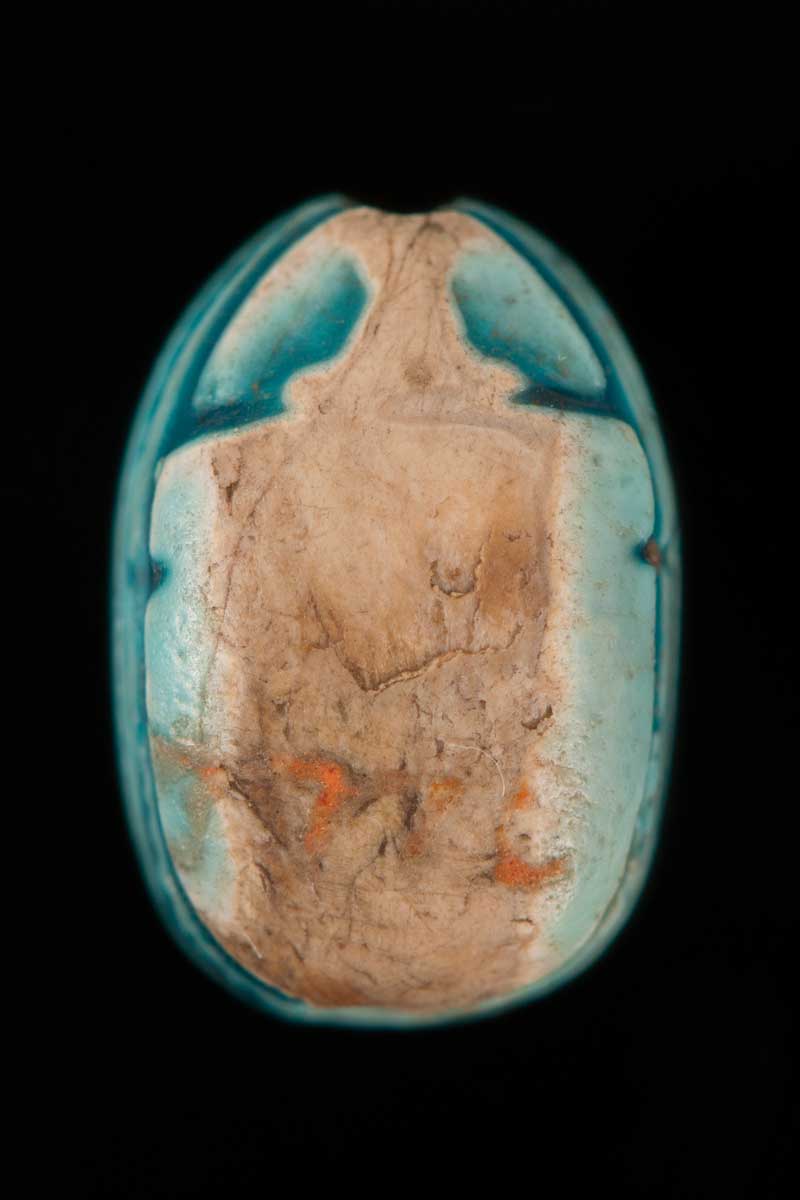
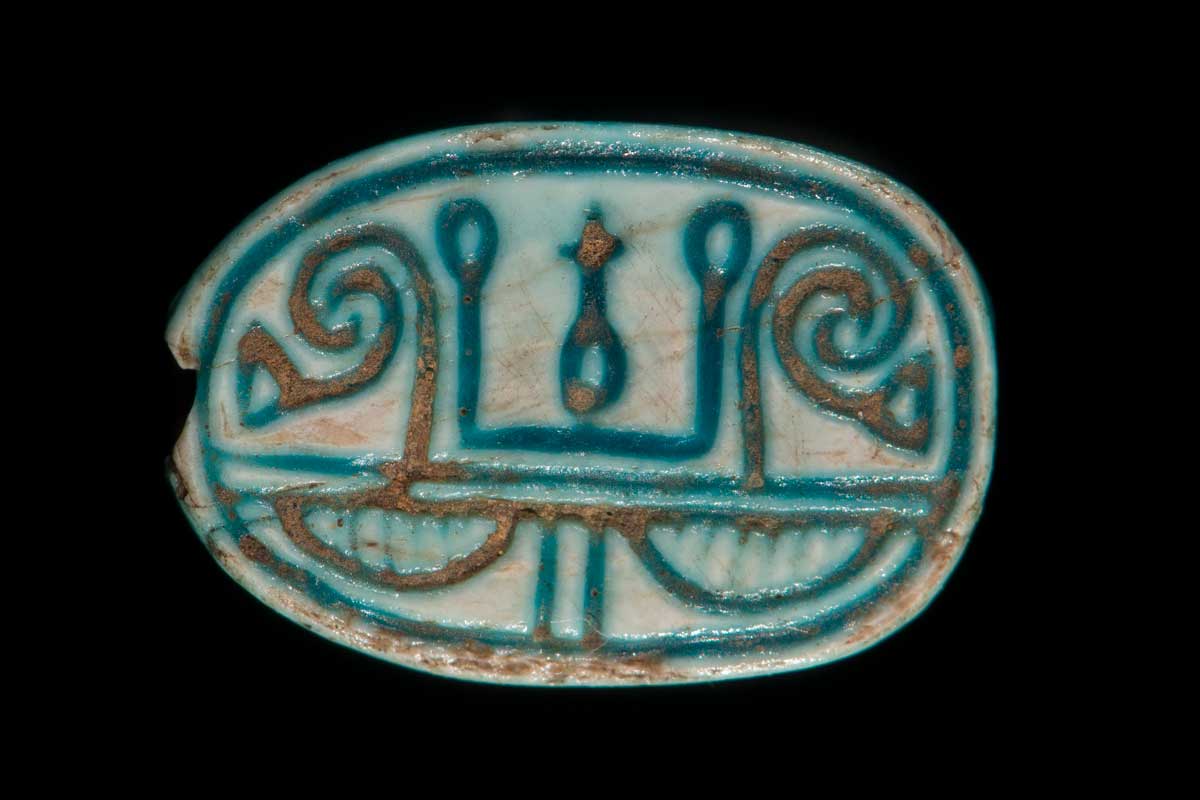
Measurements: Width: 0.69 cm; Length: 1.03 cm; Thickness: 0.40 cm
Material: Stone, steatite
Date: 12th-18th Dynasty, ca. 1985-1295 BCE
Provenance: Unknown
Collection: Cohen Collection of Egyptian Antiquities, number 200
Description (3778)
This steatite amulet is a scarab. It is bright turquoise in color with severe wear on its top, forming a thick brown strip lengthwise down its back. Its bottom is inscribed in hieroglyphic with the words “nefer ka” (fine soul) and a decorative lotus motif. It is pierced through the center lengthwise, from head to rear.
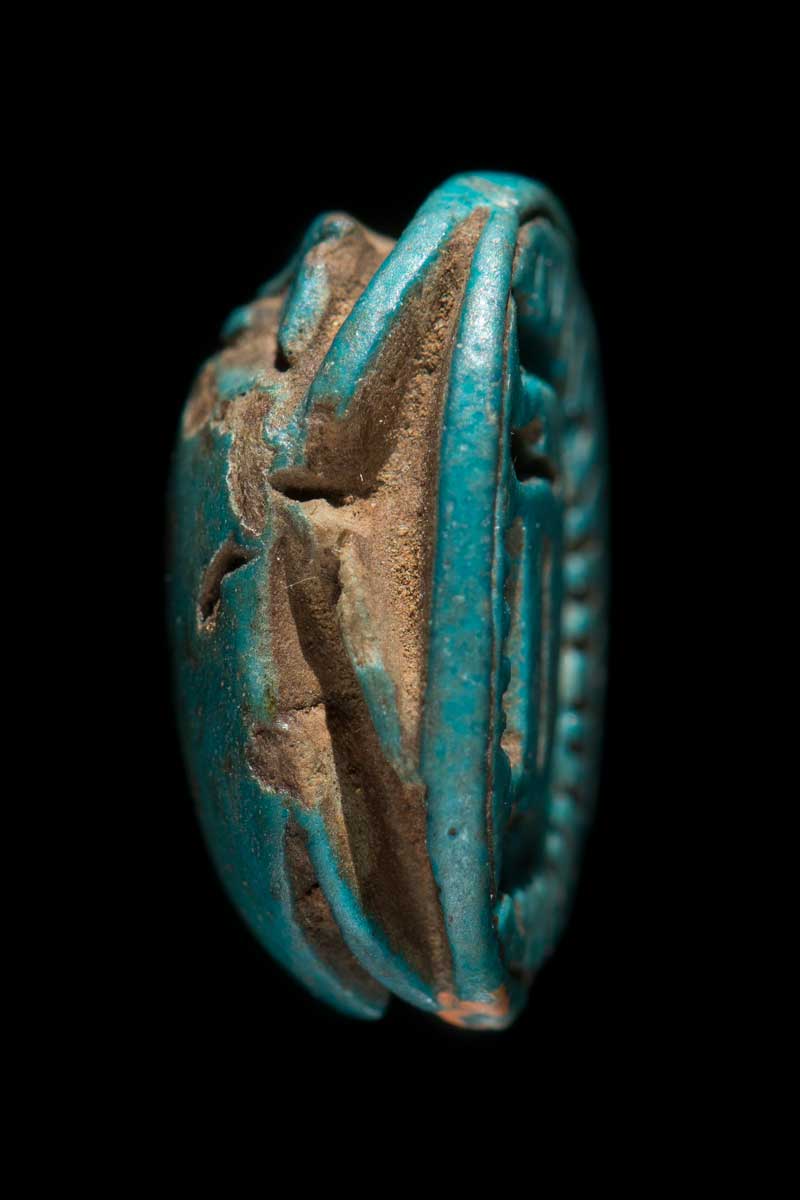
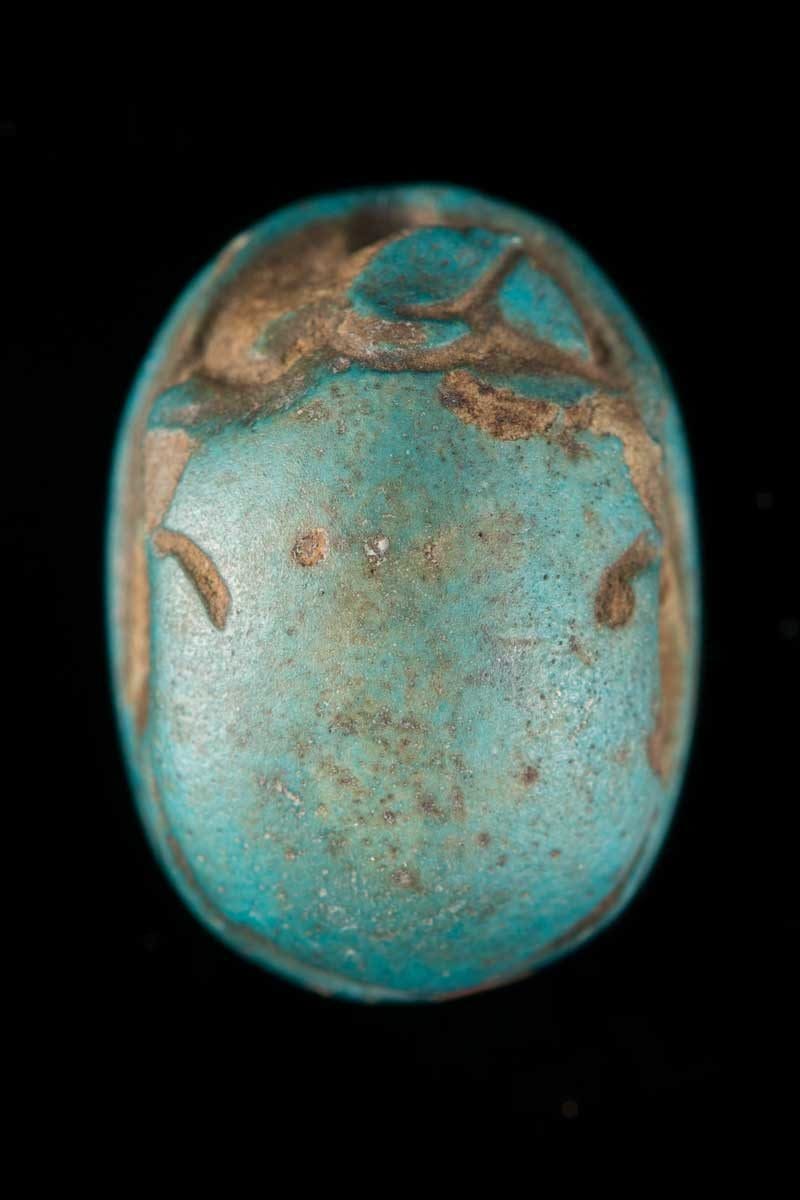
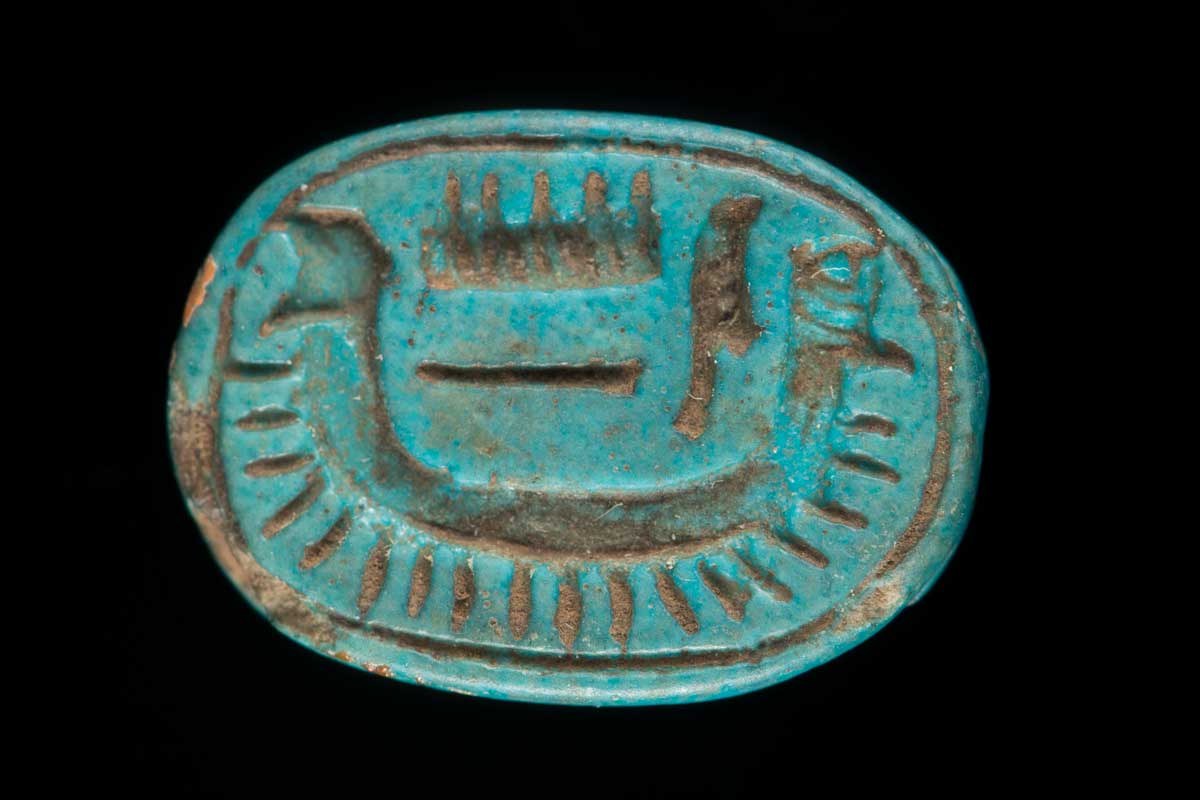
Accession number: 3757
Measurements: Width: 1.18 cm; Length: 1.62 cm; Thickness: 0.74 cm
Material: Stone, steatite
Date: 18th Dynasty, ca. 1550-1295 BCE
Provenance: Unknown
Collection: Cohen Collection of Egyptian Antiquities, number 191
Description (3757)
This steatite amulet has been carved to depict a stylized scarab. It has a worn top with some brown discoloration. On its back, there are two small elytra lines on either side. It is a bluish turquoise in color. The bottom is inscribed with the name of Amun and a depiction of a wesekh (broad) collar. It is pierced through lengthwise, from head to rear.
References
Andrews, Carol, 1994. Amulets of Ancient Egypt. Austin: University of Texas. 50-60.
Andrews, Carol, 1991. Ancient Egyptian Jewelry. New York: Harry N. Abrams, Inc. 191-6.
Cooney, Kara M., and Johanna Tyrrell, 2005. “Scarabs in the Los Angeles County Museum of Art. Part II. Catalogue.” PalArch’s Journal of Archaeology of Egypt/Egyptology 4, no. 2. 15-98.
Hall, Henry R., 1913. Catalogue of Egyptian Scarabs, Etc. London: Oxford University Press. (See particularly p. 35: 524 for an example of a scarab with a wesekh collar like JHUAM 3757.)
Newberry, Percy E., 1906. Egyptian Scarabs. Mineola, New York: Dover Publications, Inc. (See particularly p. 149, pl. XX. for scarabs with lotus designs like JHUAM 3778.)
Pinch, Geraldine, 1994. Magic in Ancient Egypt. Texas: University of Texas. 27.
Sarr, John, 2001. Highlights of the Gayer-Anderson Scarab Collection. Portland: John Sarr.